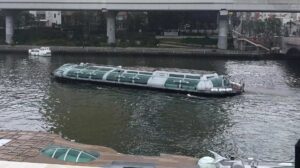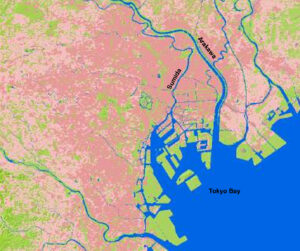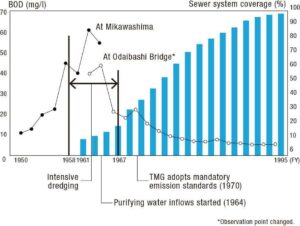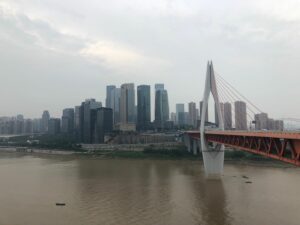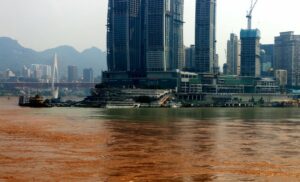
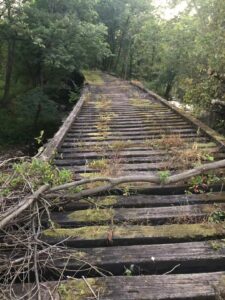
Yesterday afternoon, I had an adventure, or an exploration, along the Bushkill Creek. Started from the little dam down the hill of Lafayette College, I reached somewhere west side of Easton cemetery. For a while, as I walked along Bushkill drive and thought I lost the creek-I could only see the highway and could not find a way to access the creek again- an old wooden bridge suddenly came into my sight. I was so delighted by this discovery and decided to walk across the bridge. However, doing it was not easy because the bridge is mostly rotted. The gaps between the logs are very large, and the mosses make it very slippery to walk on. I was a little proud after walking across it successfully. When reached the other side of the river, I found a quite famous nature trail I didn’t know before. Walking along the trail back to school, I saw colorful fabrics that hang between tree branches, artistic display of pebble that form a circular labyrinth, and many graffiti-arts. Later, I knew from an exhibition board that the trial was named after Karl Stirner, a dedicated man who contribute tremendous artworks to Easton. It was a joyful exploration.
